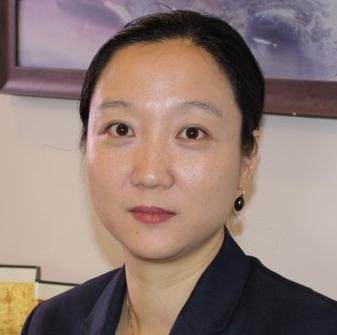That China has the right to establish an air defense identification zone (ADIZ) in the East China Sea is indubitable, and has not been authoritatively challenged. That security threats to China, particularly the escalating Diaoyu/Senkaku island dispute with Japan, made the establishment necessary is also self-evident.
The calculation and timing of China’s move may also evidence a reluctant realization that military-to-military dialogue with the United States was proving fruitless in achieving any reduction in provocative U.S. surveillance operations in the East China Sea and that the “Sunnylands Summit” promise of progress toward a “new model of great power relations” has been unfulfilled.
At the strategic level, China’s establishment of a clear ADIZ has been made necessary by the Obama administration’s military power focused “rebalance” (or “pivot”) to Asia. Respected Asian scholar, Dr. Mel Gurtov, emeritus professor of political science at Portland State University and editor in chief of the journal Asian Perspective, points out in my “Whither Japan” blog in Forbes.com, that the rebalance “may seem innocent to some…But in fact the U.S. military already has overwhelming strength in Asia relative to China, and China is in no position to catch up.”
After last June’s Sunnylands Summit, and the elaboration by President Xi Jinping of the basic premises of a constructive, “win-win” “new great power relationship,” hopes ran high that renewed high level U.S.-China military dialogue would lead to a re-examination in the Pentagon and the White House of the “pivot.” Optimism seemed particularly justified after the August visit of China’s Minister of Defense General Chang Wanquan to the U.S. and the long meeting in the Pentagon with U.S. Secretary of Defense Chuck Hagel which Hagel described as “very productive.”
General Chang, referring at the August 19 press conference to the administration’s “rebalancing” strategy, and certainly reiterating what he said to Hagel privately, noted that “the military aspect has been highlighted in this comprehensive strategy, including to strengthen military deployments in the region, enhancing U.S. alignments in this region by conducting military cooperation and joint military exercises….the frequency and intensity of such kind of joint military exercises are increasing…further complicat[ing] the situation in the region.”
General Chang continued, “It is our hope that this rebalancing strategy is a constructive one that could help peace and stability in the region…on the other hand, we would like this rebalance strategy balanced…because the essence of rebalancing is balance.”
Invited by Hagel to describe China’s concept of a “new model of military relationship,” Chang replied first with the three tenets proposed by President Xi at the Sunnylands Summit: “no confrontation, no antagonism, and respect for each other towards win-win cooperation.” Chang then elaborated some essential “do’s” and “don’ts” within the concept, among the former of which: “Both sides respect the other’s vital interests and major concerns, pay attention to the other’s comfort level, not forcefully imposing one’s will on the other, and not gaining one’s own interests at the expense of the other.”
Both before and since the Hagel-Chang meeting, almost all the evidence of Pentagon and U.S. administration actions seems to be not of “paying attention to the other’s comfort level,” but of the Pentagon digging in and hardening positions on Diaoyu/Senkaku and U.S. surveillance (including the USS Cowpens incident) which, to China, have been and remain unacceptable provocations that violate the spirit of a “new model of military relationship” and the Sunnylands Summit.
The latest evidence comes from the commander of the U.S. Navy’s 7th Fleet, Vice Admiral Robert Thomas. In a videotaped January 11 interview with Japan’s NHK, Thomas said that the 7th Fleet has increased surveillance operations in China’s ADIZ using state-of-the-art P8 patrol planes flown from the U.S. Kadena Air Base in Okinawa. The planes were deployed to Okinawa in December, the first deployment of these aircraft outside the U.S. Thomas said the deployment “sends a clear message about strengthening the U.S. alliance with Japan.”
Last year maximum pressure was brought on the Abe government to obtain the consent (duly given last month) of Okinawa governor Nakaima for work to build a large new military base on the island. The new base is ostensibly to relocate the Futenma Marine Air Station; the Pentagon has refused any restrictions on how or by which forces it will be used.
Last November, the U.S. government rejected Japan’s appeal to call for the withdrawal of China’s ADIZ. To have agreed would have been the height of hypocrisy as well as illogic, since Japan’s ADIZ—initially established earlier by the U.S.—has been in place in the region since 1969.
Covering airspace above the Diaoyu/Senkaku islands, claimed by China, Japan’s ADIZ is a violation of China’s sovereignty. China, correctly, refuses to recognize Japan’s ADIZ in this area, and is completely within its rights to establish its own ADIZ.
The purpose of an ADIZ is to defend against security threats. Clearly, the airspace above the Diaoyu/Senkaku islands, like the seas around them, now requires constant vigilance against such threats. It is highly regrettable that the U.S. military persists in its provocative surveillance off China’s coasts, which operations fully justify China’s ADIZ.
Writes Dr. Gurtov: “The Obama-Xi summit’s success has been greatly exaggerated. A positive face has been put on small achievements.” This, I believe, is the biggest problem.
While China was certainly justified in establishing its ADIZ, that it did so abruptly with little consultation with the concerned countries, particularly the United States, is evidence that the promise of last June’s Sunnylands Summit remains unfulfilled.
The Obama administration continues to implement a “rebalance” (“pivot”) that is, in fact, exacerbating a dangerous and threatening imbalance in the region. Only a reversal of the “pivot” can reduce tensions and clear the way to a “win-win” “new model of great power relations.” In the meantime, China’s ADIZ has a critical role to play.
Stephen M. Harner is a former U.S. State Department official (FSO), banker, and consultant in China and Japan. He is a graduate of the Johns Hopkins University School of Advanced International Studies (SAIS).



